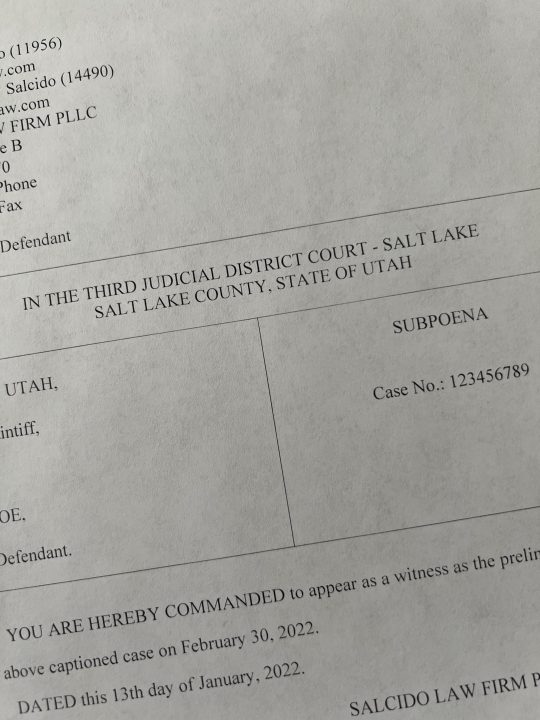An Administrative Checkpoint Must Conform to Statutory Requirements

An administrative checkpoint is a court order which allows law enforcement to stop vehicle traffic for specified purposes, always with an aim to find drivers and others who are breaking the law.
In determining whether an administrative checkpoint is constitutional, the Court must evaluate whether the checkpoint plan approved by the District Court was Constitutional on its face. See State v. DeBooy, 996 P.2d 546, 553 (Utah 2000). Usually, police need a reasonable suspicion to stop a motorist for violation of a crime. See State v. Abell, 70 P.3d 98, (Utah 2003). However, this reasonable suspicion requirement is not applicable to conduct administrative checkpoints. Id. “Highway checkpoints are an extremely narrow exception to the general rule that reasonable suspicion is required before police are allowed to detain citizens, question them, and inspect their vehicles.” Abell, 70 P.3d at 109.
Despite this narrow exception, administrative checkpoints are highly regulated. Utah Code § 77-23-101 et. seq. establishes the requirements police officers must meet in order for a checkpoint application to be approved by a magistrate. Specifically, Utah Code § 77-23-104(2)(a) allows an administrative checkpoint if
A command level officer submits to the magistrate a written plan signed by the command level officer describing:
(i) the location of the checkpoint including geographical and topographical information;
(ii) the date, time, and duration of the checkpoint;
(iii) the sequence of traffic to be stopped;
(iv) the purpose of the checkpoint, including the inspection or inquiry to be conducted;
(v) the minimum number of personnel to be employed in operating the checkpoint; including the rank of the officer or officers in charge at the scene;
(vi) the configuration and location of signs, barriers, and other means of informing approaching motorists that they must stop and directing them to the place to stop;
(vii) any advance notice to the public at large of the establishment of the checkpoint; and
(viii) the instructions to be given to the enforcement officers operating the checkpoint;
If the application meets this criteria then the magistrate needs to then make an independent determination that the plan meets certain conditions.
Utah Code §77-23-104(2)(b). Finally, the checkpoint’s primary purpose must be to inspect, verify, or detect
(i) drivers that may be under the influence of alcohol or drugs;
(ii) license plates, registration certificates, insurance certificates, or driver licenses;
(iii) violations of Title 23, Wildlife Resources Code of Utah; OR
(iv) other circumstances that are specifically distinguishable by the magistrate from a general interest in crime control.
Utah Code §77-23-104(2)(c) (emphasis added). These are statutory requirements imposed by Utah statutes, but these are in addition to the constitutional prohibitions of unlawful searches and seizures contained in both Federal and State constitutions.
Even if the plan does conform to statutory and constitutional requirements, it still needs to actually be administered according to the plan. Utah Code § 77-23-104(5) states that “Any enforcement officer participating in the operation of the checkpoint shall conform his activities as nearly as practicable to the procedures outlined in the plan.”




